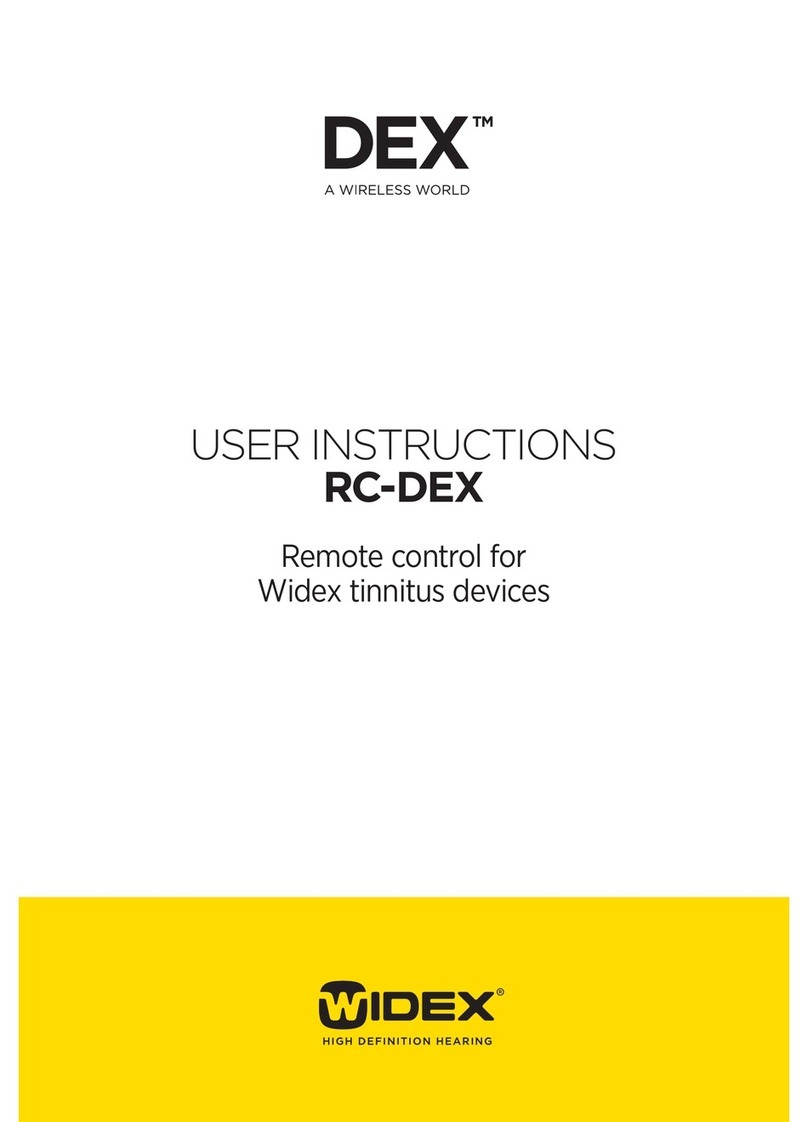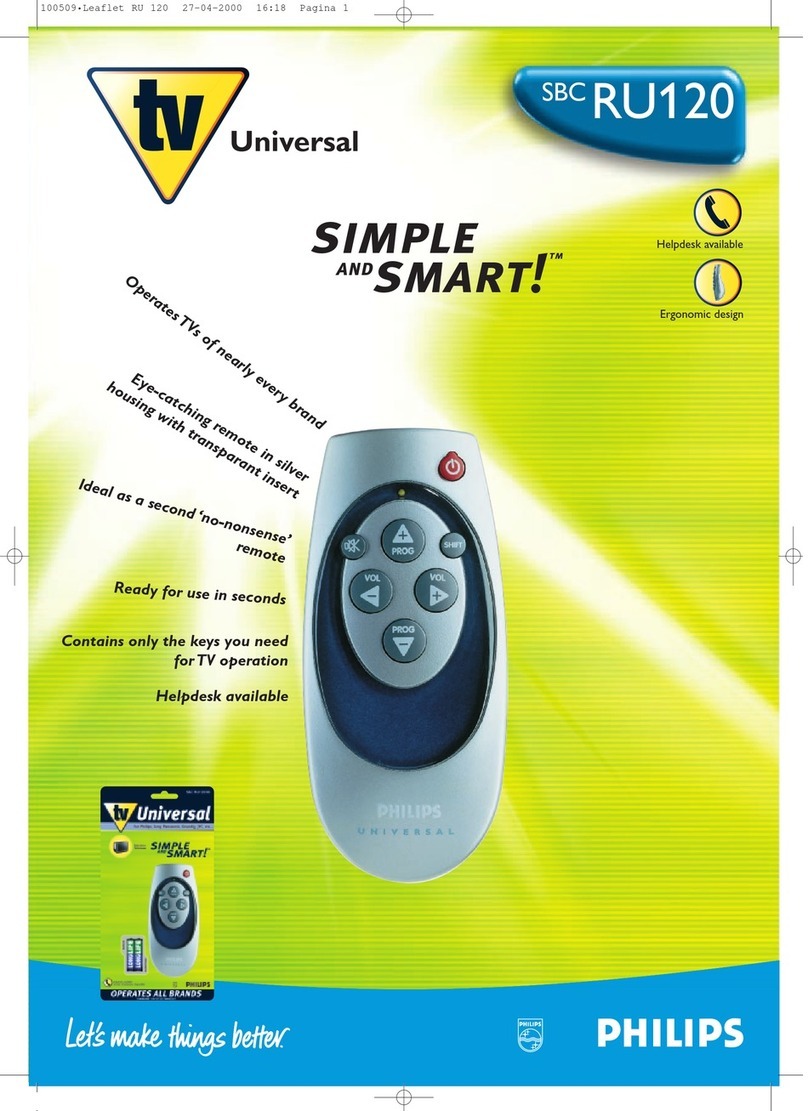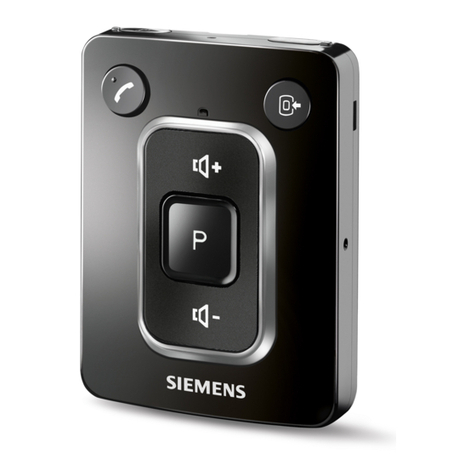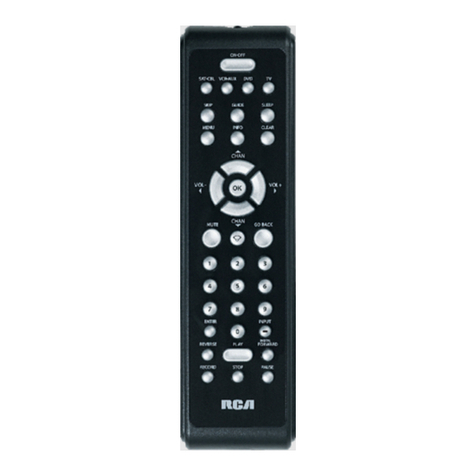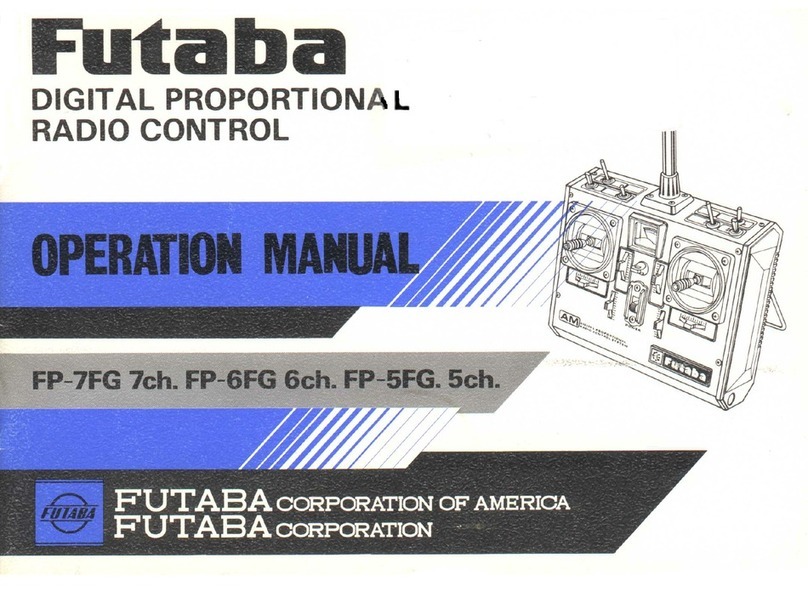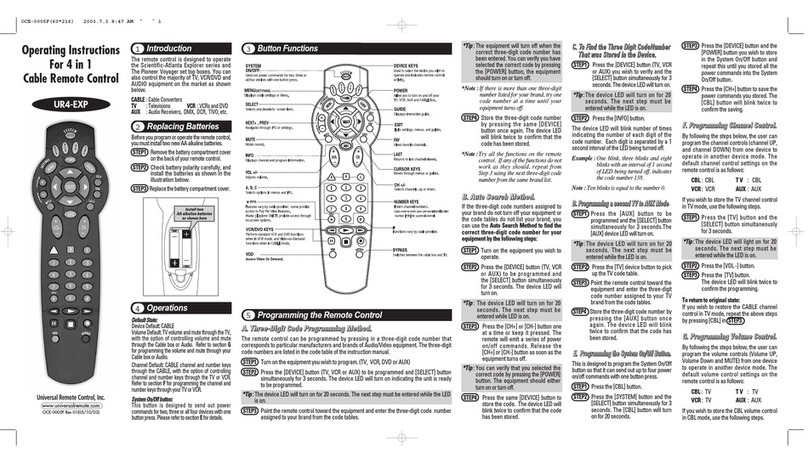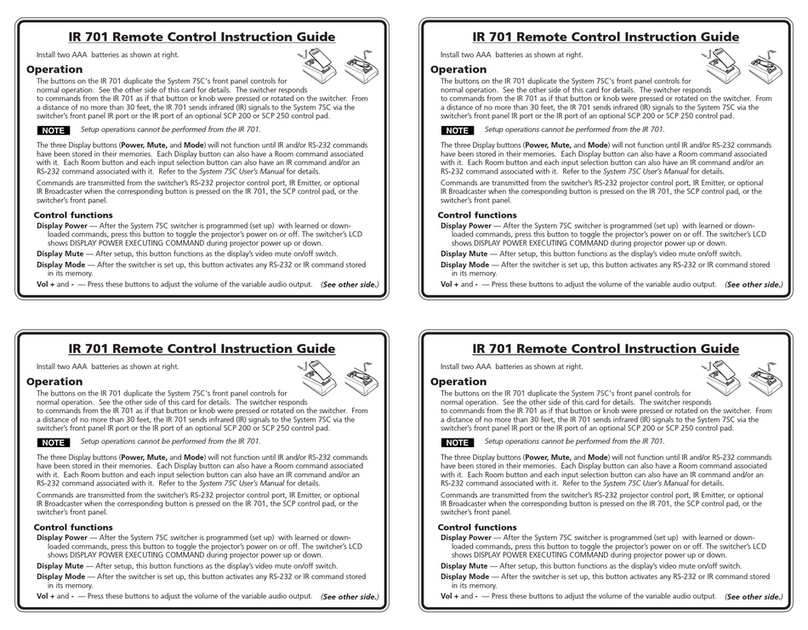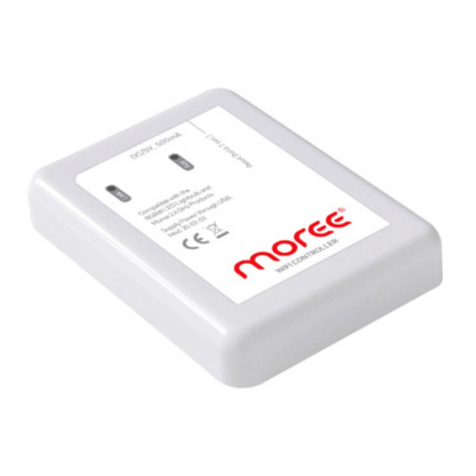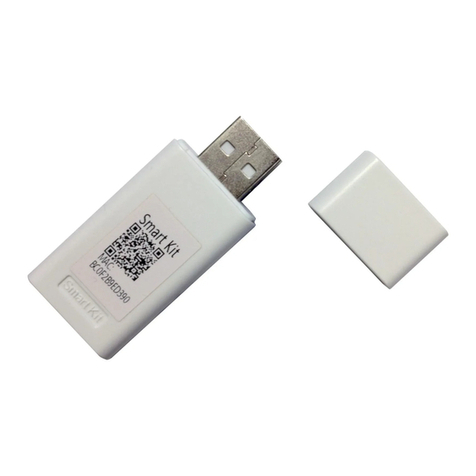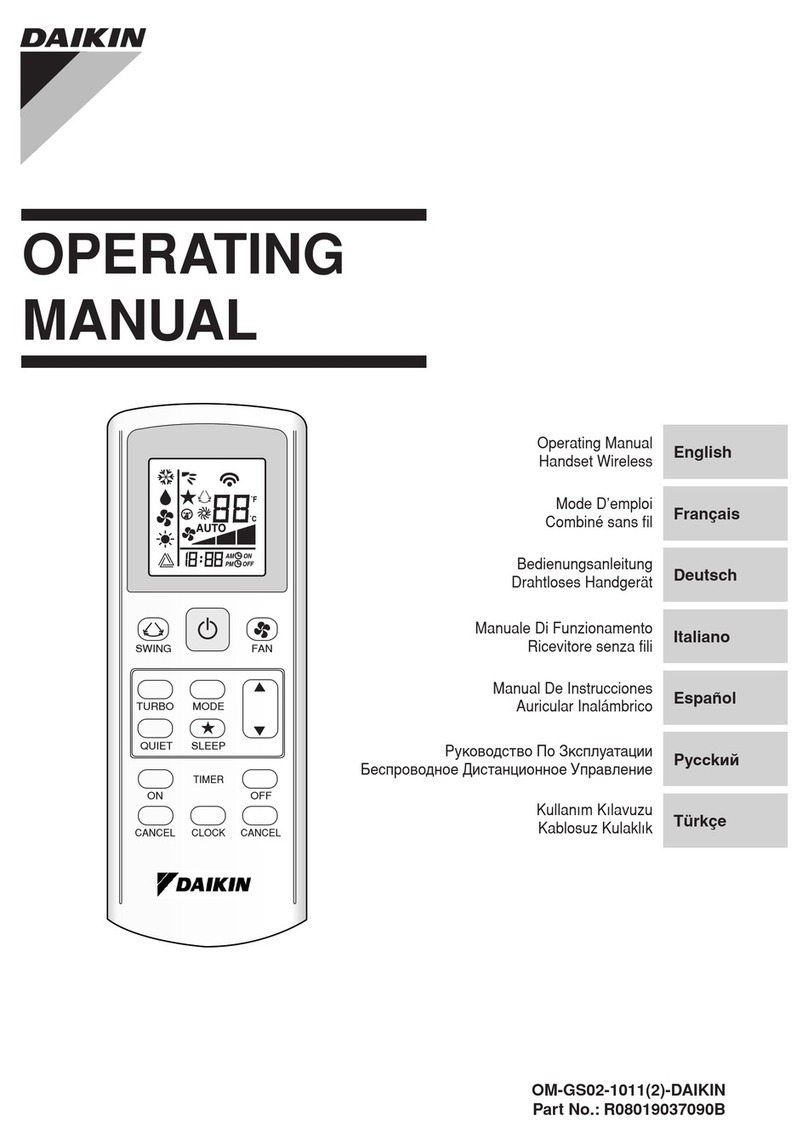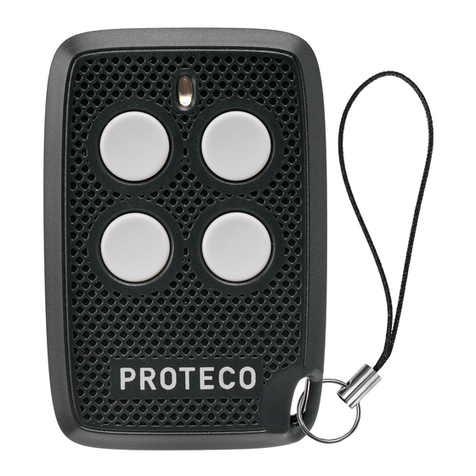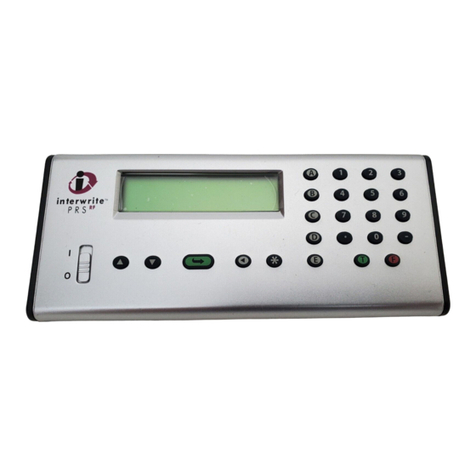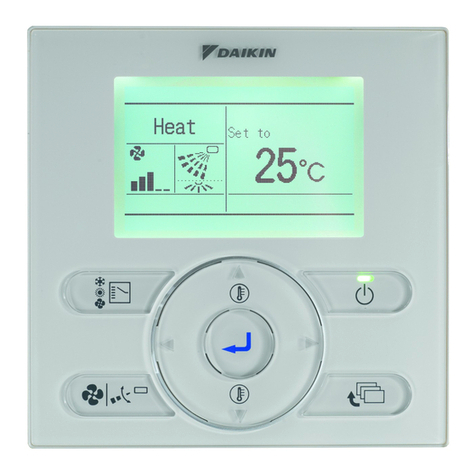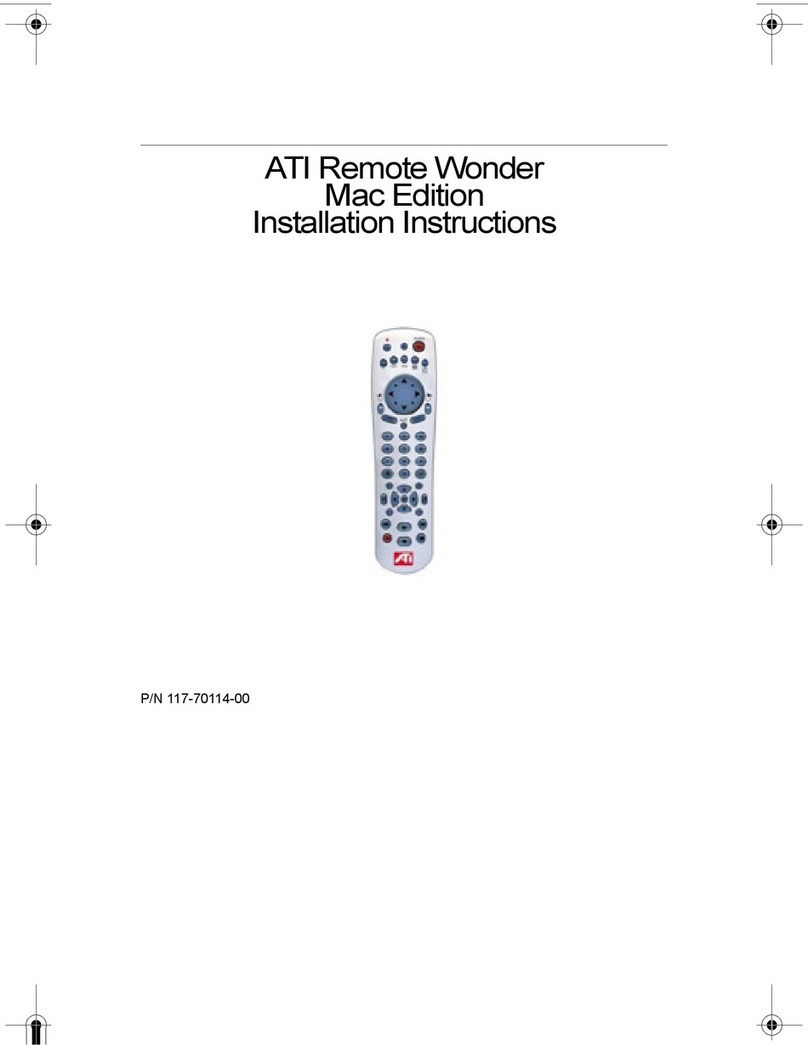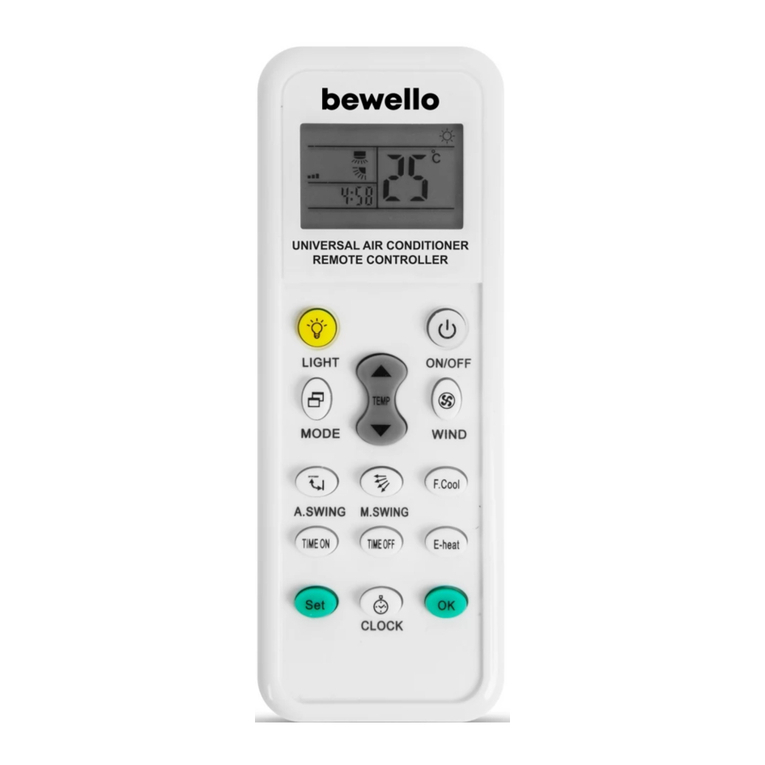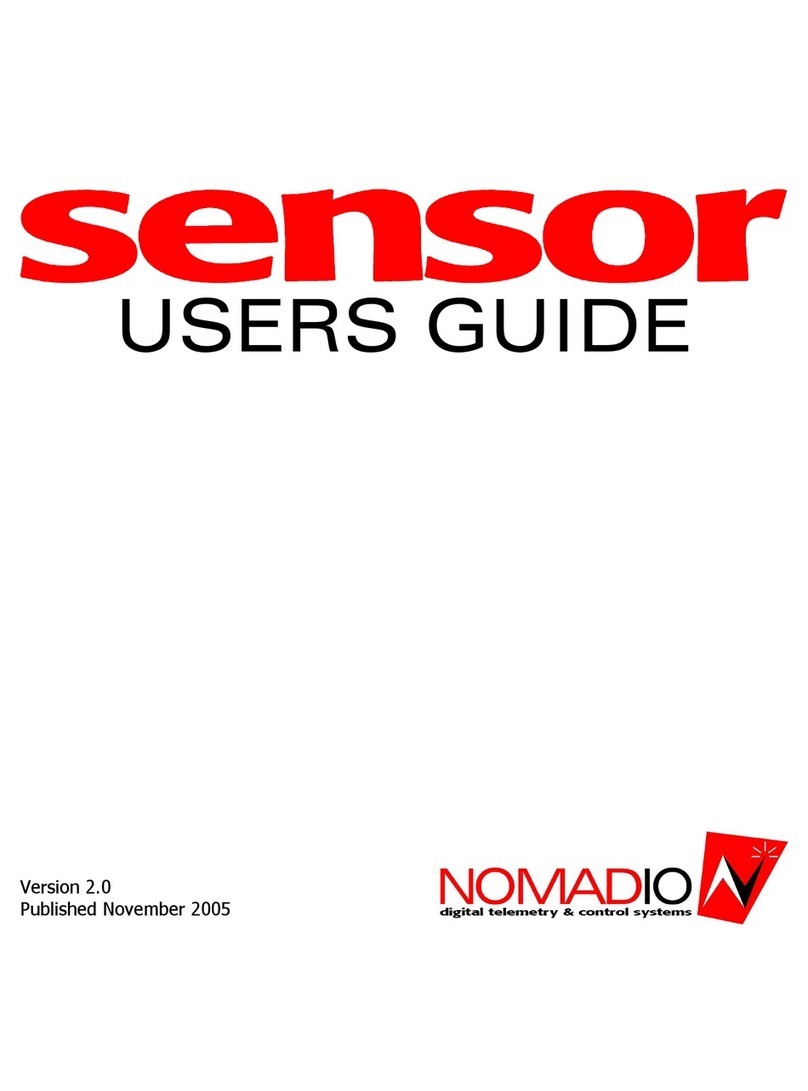Dex RC-DEX User manual

User instrUctions
RC-Dex
Remote ContRol

2

3
Contents
YOURNEWDEX™REMOTECONTROL ...............
Intendeduse .....................................
Descriptionofdevice ..............................
Frontview...................................
Rearview ...................................
ACCESSORIES ...................................
THEBATTERY....................................
Changingthebattery..............................
USINGTHEREMOTECONTROL....................
Operatingrange .................................
Light-emittingdiode .............................
Adjustingthevolume.............................
Tomutethehearingaid ......................
Changingprograms ..............................
Zen .......................................
CARINGFORYOURREMOTECONTROL ............
WARNINGS.....................................
INCASEOFMALFUNCTION.......................
REGULATORYINFORMATION .....................
SYMBOLS ......................................

4
Your new DeX™ remote Control
We hope you will be pleased with your Widex hearing
aid remote control. These user instructions explain how
your remote control should be operated.
WARNING
This booklet contains important information and instructions.
Read this booklet carefully before you start using your remote
control.
Intended use
This remote control is intended to operate Widex wire-
less hearing aids.

5
Description of device
The RC-DEX remote control gives simple access to
hearing aid functions such as volume adjustment and
program change. It is also provided with a light-emitting
diode (LED) for visual indication.
Front view
1. Light-emitting diode (LED)
2. Volume up
3. Program toggle
4. Volume down 1.
2.
3.
4.

6
Rear view
1. Battery cover
2. Eye for key ring/string attachment
If you need help to identify the serial number (usually
six or seven digits) on the product, please contact your
hearing care professional.
1.
2.

7
ACCessories
1. Battery
2. Key ring/string
1.
2.

8
the bAtterY
The battery type for this remote control is:
Lithium CR2032
To obtain replacement batteries, please consult your
hearing care professional. Please note the expiration
date and the recommendations on the battery pack
regarding disposal of used batteries.
The remote control is on when a functioning battery is
correctly placed in the battery compartment. Battery
life is up to 12 months, depending on how often you
activate the remote control keys.

9
Changing the battery
1. Slide the battery cover downwards to remove it.
2. Press the battery as illustrated to tip it up, and take
it out, or just turn the device around and let the
battery fall out in your hand.
NOTE
When changing battery, it is a good idea to hold the remote
control over a close, soft surface.
1. 2.

10
3. Insert the new battery at an angle as illustrated and
press to click the battery into place. The plus (+)
sign on the battery must face upwards.
4. Replace the battery cover.
3.
4.

11
using the remote Control
The remote control is provided with an eye for attach-
ment of a key ring or similar.
Operating range
The operating range from the remote control to the
hearing aid is up to 1 m.
Light-emitting diode
A green light in the diode indicates that one of the keys
on the remote control has been activated.
Adjusting the volume
Press the volume up key (+) briefly to raise the volume.
Press the volume down key (-) briefly to lower the
volume.
When you activate the volume keys, you will hear a brief
beep-tone. When the maximum or minimum adjust-
ment level is reached, you will hear a long beep-tone.
To mute the hearing aid
Keep pressing the volume down key on the remote
control after the long beep-tone has sounded and until
it stops. Pressing one of the volume keys briefly will
bring back the sound.

12
Changing programs
With your remote control, you can choose from a
number of listening programs depending on how many
programs your hearing aid has been programmed with.
Press the program toggle key briefly to change listen-
ing program.
Zen+
If your hearing aid is programmed with the special Zen+
program, you access this by a long key press (2 sec.) on
the program toggle key. Short presses on the program
toggle key will then allow you to choose from among
any available Zen styles. You return to the standard
listening program with a long press of the key.

13
CAring for Your remote
Control
The remote control is a valuable object and should be
treated with care. Here are some things you can do to
prolong the life of your remote control:
WARNING
• Do not expose the remote control to extreme temperatures
or high humidity.
• Do not immerse it in water
CAUTION
• Clean the remote control with a soft cloth. Never clean your
remote control with acids, alcohol, strong detergents or other
liquids.
• Avoid dropping the remote control
CAUTION
• It is not recommended to keep your mobile phone/PDA
within close proximity of the remote control e.g. same pocket.
• Never try to open or repair the remote control yourself. (To
be performed by authorized personnel only).

14
WARNING
• Do not carry your remote control with you during X-rays,
MRIs and other scans or radiation treatments and never
place your remote control in a microwave oven. These are
some of the types of radiation that can damage your remote
control.
• Radiation from room surveillance equipment, burglar alarms,
mobile phones and similar sources is weaker and will not
damage your remote control. However, on occasion radia-
tion from devices such as certain burglar alarms, automatic
motion detectors and other electronics may cause noticeable
audible interference during remote control and hearing aid
use.

15
wArnings
WARNING
Batteries can be dangerous if swallowed or used improperly.
Never put a battery or hearing aid in your mouth for any
reason as you may risk swallowing it. Swallowing or improper
use can result in severe injury, or even fatalities. In case of
ingestion, contact your physician immediately.
• Keep your remote control and its parts, accessories and bat-
teries out of reach of children and anyone else who might
swallow such items or otherwise cause injury to themselves.
Do not change batteries in front of them and do not let them
see where you keep your battery supply.
• Do not use your remote control on aircraft or in hospitals
without permission.
• Do not use your remote control in mines or other areas with
explosive gases.
WARNING
Risk of explosion if battery is replaced by an incorrect type or
recharged.

16
CAUTION
• Although your remote control has been designed to comply
with the most stringent international electromagnetic
compatibility standards, the possibility cannot be excluded
that it may cause interference with other equipment, such as
medical devices.
WARNING
Interference with active Implants
• In order to show caution, we advise to follow the guidelines
recommended by manufacturers of defibrillators and pace-
makers regarding use of mobile phones:
• If you wear an active implantable device keep the Wireless
Hearing Aids and Hearing Aid Accessories such as wireless
remote controls or communicators at least 15 cm away from
the implant.
• If you experience any interference, do not use the hearing aids
and contact the manufacturer of the implant. Please note that
interference can also be caused by power lines, electrostatic
discharge, airport metal detectors etc.
• If you have an active brain implant, please contact the manu-
facturer of the implant for risk evaluation.
If you have an implantable device, we advise to keep magnets*
at least 15 cm away from the implant. (*= can be specified as
Autophone magnet, hearing instrument case, magnet in a tool,
etc.)

17
in CAse of mAlfunCtion
This page includes some quick advice if your remote
control fails or performs unsatisfactorily. If problems
persist, contact your hearing care professional for as-
sistance.
Problem Possible cause Solution
Your remote
control does
not work
The battery is dead
or does not work
Change the battery
The battery in
your hearing aid is
exhausted
Change the battery
Out of operating
range (< 1m)
Move within operat-
ing range
Strong electromag-
netic interference
Move away from
interference source
RC-DEX and hearing
aid not paired
Contact your hearing
care professional

18
Problem Possible cause Solution
The hearing
aids do not
respond with a
corresponding
change in
volume or
program to the
RC-DEX
a. The RC-DEX is
used beyond the
transmission range
(> 1 m)
b. Strong electro-
magnetic interfer-
ence in the vicinity
c. The RC-DEX and
the hearing aids
are not paired
a. Move the RC-DEX
closer to the hear-
ing aids
b. Move away from
known source of
EM interference
c. Check with
dispenser to make
sure RC-DEX is
paired with hearing
aids
You hear
“interrupted”
speech (on and
off) from the
hearing aids
or no speech
(muted) from
the transmitting
ear
a. The battery in one
of the hearing aids
has expired
b. Strong electro-
magnetic interfer-
ence in the vicinity
a. Replace battery
in one or both
hearing aids
b. Move away from
known sources of
interference

19
regulAtorY informAtion
FCC ID: TTY-RCDEX
IC: 5676B-RCDEX
Federal Communications Commission Statement
This device complies with part 15 of the FCC Rules. Operation is
subject to the following two conditions:
(1) This device may not cause harmful interference, and
(2) this device must accept any interference received, including
interference that may cause undesired operation.
NOTE:
This equipment has been tested and found to comply with
the limits for a Class B digital device, pursuant to part 15
of the FCC Rules. These limits are designed to provide
reasonable protection against harmful interference in a
residential installation. This equipment generates, uses and
can radiate radio frequency energy and, if not installed and
used in accordance with the instructions, may cause harmful
interference to radio communications. However, there is
no guarantee that interference will not occur in a particular
installation. If this equipment does cause harmful interference
to radio or television reception, which can be determined by
turning the equipment off and on, the user is encouraged to
try to correct the interference by one or more of the following
measures:
— Reorient or relocate the receiving antenna.
— Increase the separation between the equipment and receiver.
— Connect the equipment into an outlet on a circuit different
from that to which the receiver is connected.
— Consult the dealer or an experienced radio/TV technician for
help.

20
NOTE:
This equipment complies with FCC radiation exposure limits set
forth for an uncontrolled environment. This transmitter must
not be co-located or operating in conjunction with any other
antenna or transmitter.
Changes or modifications to the equipment not expressly
approved by Widex could void the user’s authority to operate
the equipment.
Industry Canada Statement / Déclaration d’industrie Canada
Under Industry Canada regulations, this radio transmitter may
only operate using an antenna of a type and maximum (or
lesser) gain approved for the transmitter by Industry Canada.
To reduce potential radio interference to other users, the
antenna type and its gain should be so chosen that the
equivalent isotropically radiated power (e.i.r.p.) is not more than
that necessary for successful communication.
This device complies with Industry Canada licence-exempt
RSS standard(s). Operation is subject to the following two
conditions:
(1) this device may not cause interference, and
(2) this device must accept any interference, including
interference that may cause undesired operation of the device.
Conformément à la réglementation d’Industrie Canada, le
présent émetteur radio peut fonctionner avec une antenne
d’un type et d’un gain maximal (ou inférieur) approuvé pour
l’émetteur par Industrie Canada.
Dans le but de réduire les risques de brouillage radioélectrique à
l’intention des autres utilisateurs, il faut choisir le type d’antenne
et son gain de sorte que la puissance isotrope rayonnée
équivalente (p.i.r.e.) ne dépasse pas l’intensité nécessaire à
l’établissement d’une communication satisfaisante.
Other manuals for RC-DEX
1
Table of contents
Other Dex Remote Control manuals
